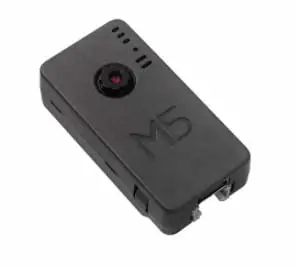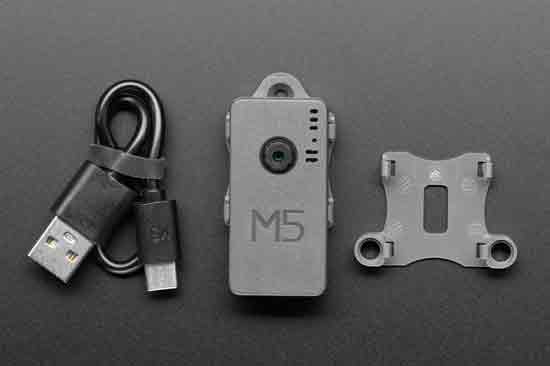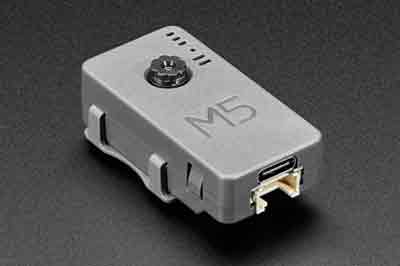Today we are going to look at another device from the M5Stack family, the Timer Camera X, a device based on the ESP32 that incorporates a 3-megapixel OV3660 camera.
The Timer Camera X is the enhanced, vitaminized, and tuned version by M5Stack of the well-known ESP32 + Camera modules, which we already saw in ESP32 + Camera Module, how to do videostream by web. Therefore, the possibilities that we are going to obtain, from the point of view of operation, are similar to a module of ESP32 with a camera.
The main point and advantage that the Timer Camera X brings is the ease of use, thanks to its differential features such as its compact body, integrated battery and RTC, or programming directly through USB-C.
Analyzing the set, inside we find our well-known ESP32 from the manufacturer Espressif with 8M-PSRAM. Its features are well known, and we summarize them as a 32-bit processor with 2 cores of up to 240Mhz, WiFi, and BT connectivity.
On the other hand, the camera is an Omnivision OV3660 from the manufacturer (OVT). The available resolutions in the OV2640 model are QVGA (320 x 240), CIF (352 x 288), VGA (640 x 480), SVGA (800 x 600), XGA (1024 x 768), SXGA (1280 x 1024), and UXGA (1600 x 1200) and QXGA (2048 x 1536).
The M5Stack Timer Camera X is available with two lenses. One “normal”, with a DFOV of 66.5º, and one with a wide angle (or fisheye) with a DFOV of 120º. In both cases, the dimensions are 48x24x15mm, and the weight is 15g.

Going into the advantages over a normal EPS32 + Camera module, first of all, we find that the M5Stack Timer Camera X is presented in a compact plastic housing. The quality, as the manufacturer has accustomed us, is appreciable at first sight.
On the other hand, another advantage of the set is that it incorporates an internal 140mAh battery. The set is completed with an RTC BM8563, which allows waking up the Timer Camera X at regular intervals, an indicator LED, and a reset button.
The combination of battery and RTC is one of the distinctive features of the Timer Camera X, and that give the device its name. The design of the Timer Camera X is designed to minimize consumption, being only 2uA in Deep Sleep mode. This means that by taking a photo every hour, the Timer Camera X can operate for more than a month with the integrated battery.
Although it is capable of videostreaming, we remember that any ESP32 module and camera are not intended for continuous use, according to the recommendations of Espressif itself.
Finally, the last advantage of the M5Stack Timer Camera X is that we can program it directly from a USB Type C. This represents an improvement over a traditional ESP32 + Camera module, which requires the connection of an additional external converter.
Regarding presentation and packaging, M5Stack once again demonstrates why it is becoming one of the favorite brands in the sector. The device is delivered in a plastic box, which includes a USB-C cable, two mounts.
One of the mounts is for attaching the Timer Camera X to a servo, while the other is compatible with Lego. This shows M5Stack’s interest in details, and how they are perfect connoisseurs of the target audience.

These advantages, logically, come at a cost. This translates into the price of the M5Stack being €15, considerably higher than that of an ESP32 + Camera module, but it is justified by the advantages we have over these.
Finally, the product is well documented on the product’s website, where a quick start guide is available. Likewise, we have the code repository on GitHub with some examples. Although most of the code available for any ESP32 + Camera module should be compatible.
In conclusion, if you want to carry out tests with the ESP32 + Camera, M5Stack is not the cheapest option, but surely the most comfortable. Personally, I see it as an advanced and “User-Friendly” version of an ESP32 + Camera.
Of course, it does not have (nor do I think it intends to) replace the much cheaper standard modules. But it is a very interesting device to comfortably carry out tests, mount it on a robot, make a prototype. In short, to play and enjoy it.
Then, if you want, it would be easy to port the code to a cheaper module, probably by making a specific case for it. This way, we can reuse the M5Stack Timer Camera X for use in other projects.
It is also interesting in projects where we can take advantage of its housing, battery, and RTC. The first thing that comes to mind is a video surveillance camera, for taking periodic photos. Personally, I don’t find this to be its most interesting use. But I do see it attached to a robot, or a robotic arm, for example, or in a lot of other projects.
In conclusion, in my opinion, the Timer Camera X is a very interesting device that adds to the many other members of the M5Stack family, which we are liking more and more for the design, manufacture, and documentation of their products.
